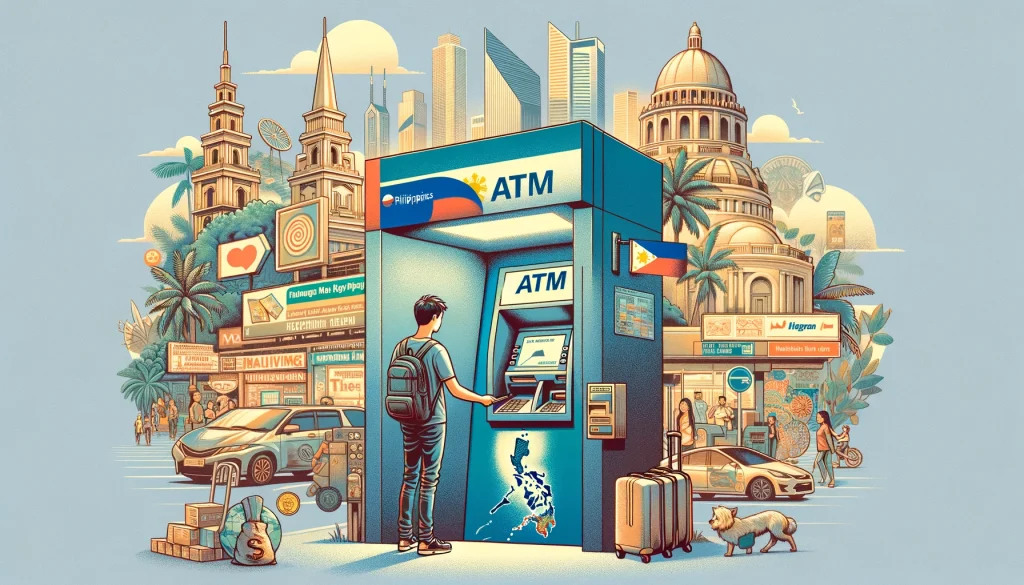Navigating the world of ATMs in the Philippines can be straightforward once you’re equipped with the right information.
Whether you’re a tourist or a new resident, understanding where to find ATMs, how to use your credit or debit cards, withdrawal limits, and fees is essential.
This comprehensive guide covers everything you need to know about using ATMs in the Philippines, including tips to minimize fees.
Finding ATMs in the Philippines
ATMs are widely available in the Philippines, especially in cities and tourist areas. You’ll find them in malls, near banks, at airports, and in convenience stores.
Rural and remote areas might have fewer ATMs, so it’s wise to withdraw cash before heading off the beaten path.
Will My Credit or Debit Card Work?
Most international Visa, MasterCard, and American Express cards work in Philippine ATMs.
However, it’s crucial to inform your bank about your travel plans to avoid any security blocks on your card.
Also, check if your card is compatible with the local networks like BancNet, Megalink, or Expressnet.
Philippine ATM PINs
The Philippines typically uses four-digit PINs for ATM transactions. If your home country uses a different system, you might need to change your PIN before traveling.
Ensure your PIN doesn’t start with a zero, as some machines in the Philippines might not accept them.
Withdrawal Limits
Withdrawal limits can vary depending on the bank, but they generally range from PHP 10,000 to PHP 20,000 per transaction.
Some banks might allow multiple transactions per day, but keep in mind that your home bank may have daily withdrawal limits as well.
ATM Fees in the Philippines
Fees for ATM transactions can add up. You’ll encounter two types of fees: local ATM operator fees and your home bank’s international transaction fees.
The local ATM fee in the Philippines can range from PHP 200 to PHP 250 per transaction.
Additionally, your home bank may charge a separate fee for foreign transactions and currency conversion.
Tips to Avoid ATM Fees
- Choose the Right Card: Some travel credit or debit cards offer low or no fees for international ATM withdrawals. Research and possibly obtain one before your trip.
- Withdraw Larger Amounts: To minimize fees, withdraw larger amounts less frequently, keeping in mind safety and your daily limit.
- Use ATMs of Major Banks: They often have higher withdrawal limits and may be more reliable.
- Check for Partner Banks: Some banks have partnerships with local banks in the Philippines, offering reduced fees for their customers.
- Consider Currency Exchange Services: If ATM fees are too high, compare them with the rates at currency exchange services, but be cautious of exchange rates.
FAQs on Using ATMs in the Philippines
Q: Can I rely solely on ATMs for money in the Philippines?
A: While ATMs are widely available, it’s a good idea to have some cash on hand, especially in remote areas or for small purchases where cards may not be accepted.
Q: Are there English instructions on ATMs in the Philippines?
A: Yes, ATMs in the Philippines typically offer an English language option.
Q: What should I do if an ATM retains my card?
A: Contact the bank operating the ATM immediately. It’s helpful to have a local SIM card to make such calls easier.
Q: Is it safe to use ATMs in the Philippines?
A: Yes, but exercise the usual precautions: use ATMs in secure, well-lit areas, and be mindful of your surroundings.
Understanding the ins and outs of using ATMs in the Philippines can help you manage your finances smoothly during your stay.
By planning, choosing the right banking products, and being aware of the fees involved, you can ensure that accessing your money is hassle-free and cost-effective.



